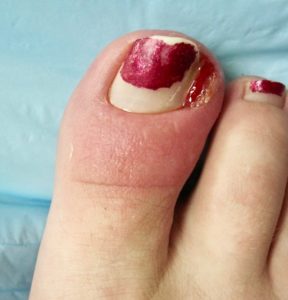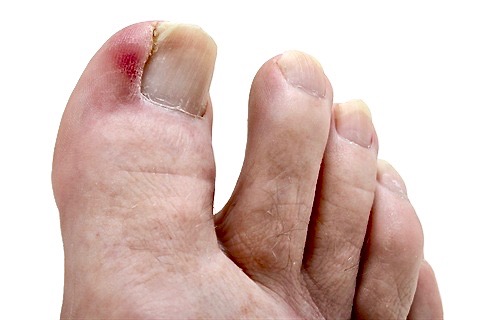Ingrown Toenails
Watch the video above to learn about Ingrown Toenails, and how I approach treating this with my patients. There's also more information below. As always, when you're ready, fill out the form on this page to request a consultation.


Symptoms
- Pain, generally sharp and throbbing in nature, is commonly felt along the corner of the involved toenail
- Redness, swelling, or warmth
- Skin overgrowth and granulation tissue
- Drainage, including pus or clear fluid
- Bleeding
Diagnosis
Diagnosis is made by a comprehensive foot exam by Dr. Stewart.
Common Causes
- Ingrown toenails are typically the result of the anatomy of the nail, particularly in patients whose nails are incurvated (curved)
- Biomechanical or structural deformities of the foot including hallux limitus/rigidus
- Trauma
- Poor fitting shoe gear
- Toenail fungus
Treatment
There are two goals when treating ingrown toenails. The first goal is to eliminate pain and infection when present. The second goal is to prevent recurrence of the ingrown toenail. Both temporary and permanent treatment options are available for ingrown toenails.
Temporary Treatment of Ingrown Toenails
Temporary treatment typically involves removing the ingrown border or simply trimming the ingrown toenail. This can provide immediate pain relief from an ingrown toenail, yet as the toenail grows there is a high likelihood that the ingrown toenail will recur. These procedures are typically performed when a permanent nail procedure is contraindicated. Temporary treatment can also include open toe shoes or deep and wide shoes.
Permanent Treatment of Ingrown Toenails
Permanent treatment options are preferable as they prevent recurrence of the ingrown toenail. With permanent treatment, the nail matrix cells are either surgically removed or destroyed with an acid. This prevents a particular portion of the toenail from regrowing. In most instances only a portion of the toenail is targeted for removal. In certain circumstances the entire toenail is permanently removed.
The most common procedure performed for an ingrown toenail is a partial nail avulsion with phenol and alcohol matrixectomy. This procedure is done under local anesthesia in the office. When an infection is present, patients are usually treated with antibiotics for one week prior to the procedure, as the procedure is generally not as effective in the setting of infection. The offending or ingrown toenail border is removed and the matrix cells are burned with phenol, which is an acid, and the site is then flushed with alcohol. This procedure is very effective.
Following this procedure, patients typically provide local wound care for two weeks. Most patients can resume physical activity within a few days. In certain circumstances, healing can take 4-6 weeks. Patients are always warned that there is a possibility of recurrence following permanent procedures. In the event of recurrence, the procedure is generally repeated or a surgical procedure is performed to remove the nail matrix cells.
Dr. Stewart himself is one of the few Doctors I have met that is professional and personable at the same time. He listens to what you have to say and is will to explore your many options. – Meredith Tracey
